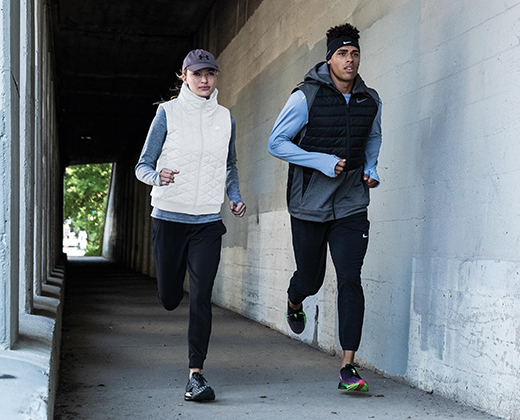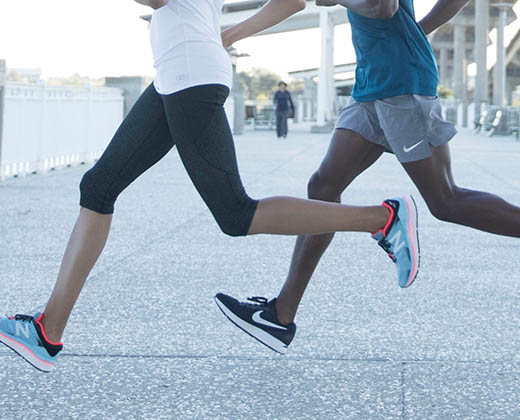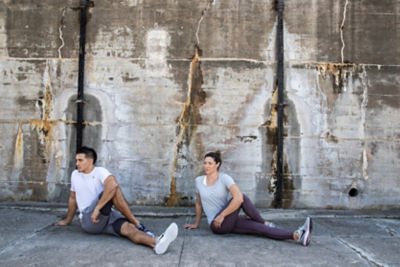How to Choose Running Tights
Get a tight rein on how to choose running tights with these Pro Tips.

Looking to become a more serious runner? The first step is to dress the part, and that starts with a good pair of running tights. Whether you’re new to the run game or trying to unlock a new PR, Pro Tips is here to give you the rundown on running tights.
WHAT ARE THE BENEFITS OF RUNNING TIGHTS?
Running tights have a simple goal – to make sure that your apparel does not distract you during your run. The compressive nature of the tights creates minimal drag while running. Loose-fitting materials are more likely to hinder your performance by catching pockets of wind.
Some runners also prefer running tights to running shorts so that their muscles stay warm. Also, the fabric of shorts is more likely to move and rub against your skin and cause chafing.
Many running tights also use moisture-wicking fabrics, which have features that can be beneficial to your workout.
HOW SHOULD RUNNING TIGHTS FIT?
It shouldn’t come as a surprise that running tights should fit, well, tight. Not only can the elasticity prevent your apparel from loosening as you sweat, the tight fabric can also guard against windchill. However, be mindful that your tights aren’t too restrictive. They should be comfortable and allow for complete freedom of movement.
Another feature to consider is how the seams fall on your leg. Seams should flow comfortably against your skin to avoid irritation and chafing.
It is also important that you do not choose a pair that is too long. Excess fabric can gather at the bottom and cause discomfort and distraction. On the flip side, a pair that is too short can lead to chilly ankles. In this instance you may want to consider a pair of running socks that extends higher.
Before finalizing your purchase, it can also be helpful to engage in the squat test. Perform a few squats to ensure your tights have proper coverage and you have a high enough waistband. Some runners choose to wear a pair of shorts over their tights for a more modest look.
RUNNING TIGHT FEATURES
When shopping for running tights, there a few key features to look out for.
REFLECTIVITY
One of the differences between regular gym leggings and running tights is reflectivity. Some running tights will have reflective paneling to help keep you visible. This is an important feature for those who prefer running at night. Learn how to stay safe and visible during your next evening run with our Pro Tips guide on running at night.
ZIPPERED KEY POCKET
Features such as zippered key pockets can help you securely carry your gear while running. Ideally, the pocket should fall on the hip or the waist so that it doesn’t detract from your run. However, if you still need more room, you can opt for choosing a fanny pack instead.
RUBBERIZED GRIPS
Rubber grips are elastic rings within the leg portion of the leggings. They prevent your tights from moving up and down on your leg when you run.
WAISTBAND
When running, it is crucial for your leggings to stay in place. That’s where different waistbands come into play. Spandex can provide some support, but some runners may prefer a drawstring waist that allows you to adjust tightness.
WEATHER
The climate of where you run may also impact your choice of running tights. Some tights use insulated materials to help combat chilly temperatures. Cold-weather runners should also look for full-length leggings. Meanwhile, those in warmer climates may prefer capris.
Now that you know the groundwork for finding a perfect pair of running tights, you can complete your running wardrobe. A pair of running shoes can create a great foundation, while you can also pair running shorts with your tights or wear them on their own.
Searching for the right size? Look for the True Fit icon on apparel and footwear product pages when shopping online at DICK’S Sporting Goods. Get personalized size and fit recommendations with just a few clicks. Learn more about True Fit.








